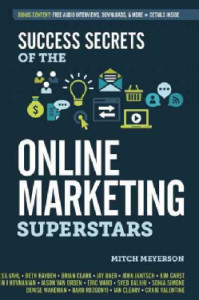Just a Spoonful of Keyword Phrases Makes SEO Go Up

“To maximize the traffic that comes to your blog via search engines, focus on optimizating each of your blog posts for just one or two keyword phrases. Too many keyword phrases dilutes the content of your post for readers and can look like spam to both readers and search engines,” Susan Gunelius cautions in abouttech.com.
What, exactly, are keyword phrases? “These are words that you enter into your meta tags that describe your page so that when someone goes to a search engine and types in one or more of those words your page will be added to the list of pages they are given,” Linda Roeder explains. How long are keyword phrases? Statistics show that nearly 60% of keyword searches include phrases consisting of 2-3 words, according to Gunelius..
Gunelius’ tips for effective keyword use include:
- Choose just one or two keyword phrases for each blog post
- Use them in the title (however, don’t sacrifice the title’s ability to motivate people to click through)
- Use keywords multiple times in the post, first within the first 200 characters, several times throughout, and near the end.
- Use keywords in and around links
- Use keywords in image alt-tags
While using keywords in links is a great way to boost search engine optimization, Gunelius warns, too many links can be viewed as a spam technique. The accepted link-to-text ratio is one link per 125 words. (For this very Say It For You post, for example, the two to three links I’ve used are just about right.
So how do you know which keywords deserve your focus? One of the easiest ways to get a basic idea of what people are looking for online, Gunelius says, is to check the popularity of keyword searches on websites that deal with keyword popularity, such as:
- Wordtracker (http://www.wordtracker.com/)
- GoogleAdWords (http://www.google.com/adwords/)
- Google Trends (http://www.google.com/trends/hottrends)
- Yahoo! Buzz Index (https://www.yahoo.com/)
Like Mary Poppins’ recipe for making the medicine go down, incorporating keywords into blog posts – but only by the single spoonful – can be the secret for getting found on search engines.





Follow us online!